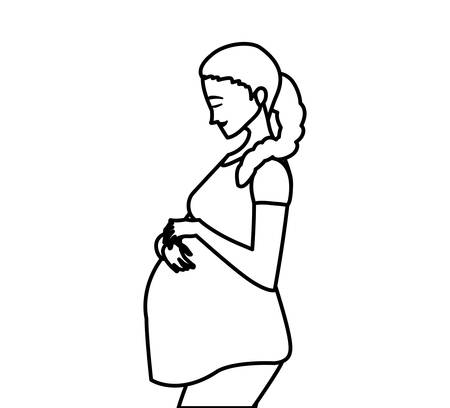Choosing the Right Cot for Your Baby
When preparing your baby’s nursery in the UK, selecting a cot that adheres to the highest safety standards is essential. Begin by ensuring the cot meets British safety regulations; look for certification such as BS EN 716, which guarantees that the product has undergone rigorous testing for strength, stability, and non-toxic finishes. Consider the available space in your home: measure your nursery to choose a cot that fits comfortably without crowding other essential furniture or restricting movement. Opt for materials known for their durability and safety, like solid hardwoods or certified sustainable sources, and check that all paints or finishes are lead-free and baby-safe. Features such as adjustable mattress heights and teething rails are beneficial, but always ensure these additions comply with UK safety guidelines. Prioritise cots with bars spaced no more than 6.5cm apart to prevent your baby from slipping through or getting stuck. By thoughtfully considering these factors, you’ll create a secure sleeping environment tailored to your family’s needs and compliant with trusted UK standards.
2. Selecting the Ideal Location in Your Home
Choosing the right spot for your baby’s cot is essential for both safety and peace of mind. In UK homes, rooms can vary in size and layout, so it’s important to carefully assess your space before settling on a location. Here are some practical tips to help you position the cot safely:
Tips for Safe Cot Positioning
| Tip | Why It Matters | What To Do |
|---|---|---|
| Avoid Windows | Windows can pose risks such as draughts, falling hazards, and strangulation from blind cords. | Place the cot away from all windows and ensure any nearby cords are secured well out of reach. |
| Keep Away from Radiators & Heaters | Radiators and heaters may cause overheating or burns. | Ensure at least one metre distance between the cot and any heat source. Check temperature regularly. |
| Steer Clear of Cords & Electrical Outlets | Cords from blinds or electricals can be dangerous if within baby’s reach. | Position the cot so that all cords and outlets are inaccessible. Use cord shorteners or covers where necessary. |
| Don’t Place Under Shelves or Heavy Items | Shelves or frames could fall, posing a risk to your baby. | Select a bare wall for the cot, keeping overhead space clear of heavy objects. |
| Allow Easy Access for Night Feeds | You’ll need to access your baby easily, especially during night-time feeds and changes. | Arrange the cot so you have enough space to move around and reach in comfortably from either side. |
UK Home Considerations
If you live in a traditional terraced house or flat with limited room, prioritise safety over convenience by making sure there’s sufficient airflow but no direct draught. In line with NHS advice, keep your baby’s cot in your bedroom for at least the first six months, placing it near your bed but not sharing bedding. By thoughtfully selecting your cot’s location, you lay the foundation for a safe and restful sleep environment for your little one—and peace of mind for you as new parents.

3. Assembling the Cot Safely
When it comes to putting together your baby’s cot, a careful and thorough approach is key for both your peace of mind and your little one’s safety. Here’s a step-by-step guide tailored to UK homes, ensuring you assemble the cot safely and securely:
Step 1: Prepare Your Workspace
Clear a spacious area in the nursery or chosen room, laying out all parts on a soft surface like a rug to prevent scratches. Make sure you have all components as listed in the manufacturer’s manual before starting—missing bolts or slats can compromise stability.
Step 2: Read Through the Manual
Take time to read through the assembly instructions from start to finish. UK cot designs may differ slightly from international styles, so pay close attention to any specific guidance provided by the manufacturer. Keep the manual handy throughout for easy reference.
Step 3: Use Tools Properly
Most cots will require simple tools such as an Allen key or screwdriver—often included in the box. Use only the recommended tools and avoid overtightening screws, which can damage the wood or fittings. Always keep small parts away from children’s reach during assembly.
Step 4: Follow Each Step Methodically
Follow each step of the manual in order, resisting the urge to skip ahead. Begin with larger frame pieces, progressing to slats and mattress base. Secure all connections firmly as you go; don’t be tempted to leave anything loosely attached until later.
Step 5: Double-Check All Fixings
Once assembled, carefully inspect every bolt, screw, and fitting. In UK homes, older floorboards or carpets can affect how level your cot sits—make any necessary adjustments so that it stands stable and even. Give the cot a gentle shake to ensure there are no wobbles or loose joints.
Your Peace of Mind Matters
Proper assembly isn’t just about following steps—it’s about creating a safe sleep environment for your baby that meets UK safety standards. If in doubt at any stage, consult the manual again or contact customer support for clarification. Remember, this is an investment in your baby’s comfort and security as well as your own confidence as a parent.
4. Ensuring a Safe Mattress and Bedding Set-Up
Choosing the right mattress and bedding for your baby’s cot is essential for both comfort and safety. In line with NHS recommendations, it’s important to select a mattress that is firm, flat, and fits the cot snugly without gaps at the edges. A well-fitting mattress reduces the risk of your baby getting trapped or suffocating, while firmness provides proper support for their developing body.
How to Select the Right Cot Mattress
| Feature | NHS Recommendation |
|---|---|
| Firmness | The mattress should be firm enough that your baby does not sink into it. |
| Fit | No more than a 2cm gap between the mattress and cot sides. |
| Waterproof Cover | A wipe-clean, waterproof cover helps maintain hygiene. |
| Condition | Use a new or very good condition mattress – avoid second-hand if possible. |
Recommended Bedding According to NHS Guidelines
Bedding choices are just as crucial as the mattress itself. The NHS advises against using duvets, quilts, pillows, or loose blankets for babies under one year old as these can increase the risk of overheating and suffocation. Instead, opt for a lightweight blanket or a properly sized baby sleeping bag suitable for the season.
Appropriate Bedding Options
- Cot Sheets: Use fitted sheets made from breathable cotton for easy washing and comfort.
- Blankets: Choose cellular blankets that allow airflow and layer them depending on room temperature.
- Baby Sleeping Bags: Ensure they fit well at the neck and arms so your baby cannot slip inside; check tog ratings for seasonal suitability.
Room Temperature Advice
The ideal room temperature for your baby is between 16°C and 20°C. Always adjust bedding layers according to how warm or cool the nursery feels, ensuring your baby doesn’t overheat. Regularly check your babys chest or back to gauge their temperature rather than their hands or feet, which can often feel cooler.
5. Key Cot Safety Checks Before Use
Before you tuck your little one in for their first night, it’s crucial to carry out a thorough safety check of your cot. Here’s a handy checklist to ensure your baby’s sleeping environment is as safe as possible—just what every UK parent needs for peace of mind.
Slat Spacing
Check that the slats on your cot are no more than 6.5cm apart. This spacing helps prevent your baby from getting their head, arms, or legs stuck between the slats. In the UK, this measurement is in line with British safety standards and is non-negotiable for your baby’s wellbeing.
Stable Legs and Frame
Give the cot a gentle shake from various angles to make sure it doesn’t wobble or creak. All four legs should rest evenly on the floor, with no signs of instability. If you’re placing the cot on carpet, double-check that it sits flat and doesn’t rock. A stable base is vital to prevent any accidents if your baby gets wriggly during sleep.
No Loose Parts or Hazards
- Tighten all screws, bolts, and fixings once more, ensuring nothing is loose or missing.
- Inspect every edge and corner for sharp points or rough surfaces that could scratch delicate skin.
- Remove any decorative elements like ribbons, mobiles with long strings, or bumpers inside the cot—these can pose strangulation or suffocation risks.
Check Mattress Fit
Your mattress should fit snugly inside the cot frame, with no gaps larger than 3cm at any edge. Gaps can be hazardous if your baby rolls over and gets an arm or leg trapped.
Final Inspection: Surroundings Matter Too
Ensure there are no blind cords, curtains, or heaters within reach of the cot. Position the cot away from windows to avoid draughts and direct sunlight—classic UK weather can change fast!
Peace of Mind for Your Family
By ticking off these final checks, you’re not just following guidelines—you’re creating a safe haven where your baby can sleep soundly and you can relax knowing everything’s secure. With your cot fully checked and compliant with UK safety standards, you’re well on your way to a happy, healthy start for your growing family.
6. Creating a Calm and Nurturing Sleep Environment
Tips for Maintaining a Soothing Bedtime Space
Establishing a restful cot area in your UK home goes beyond the physical setup—it’s about creating an atmosphere that encourages healthy sleep for both baby and family. Consider keeping the nursery free from clutter, using soft, neutral colours on the walls, and opting for blackout blinds to block out the long summer evenings or early morning light typical of British weather. Gentle, warm lighting such as a dimmable night lamp can provide comfort during late-night feeds or nappy changes without fully waking your baby.
Guidance on Room Temperature
The ideal room temperature for a baby’s sleep is between 16°C and 20°C, which is particularly important given the UKs variable climate. A room thermometer can help you keep track, ensuring it’s neither too cold in winter nor too warm during unexpected heatwaves. Dress your baby in layers appropriate to the season—think breathable cotton sleepsuits—and use cellular blankets rather than duvets or pillows, as recommended by NHS guidelines.
The Importance of a Calm Atmosphere
A serene environment benefits not just your little one but also the whole family’s wellbeing. Establish a consistent bedtime routine—perhaps a soothing bath, followed by gentle lullabies or bedtime stories in a soft voice. Avoid overstimulating activities close to bedtime. If you live in a lively household or urban area, consider white noise machines to mask disruptive sounds from traffic or neighbours. By prioritising calmness and comfort in your babys sleeping space, you’re nurturing their development and helping everyone enjoy more restful nights together.


